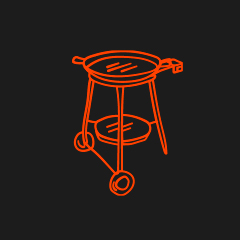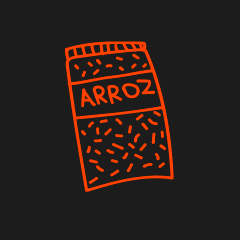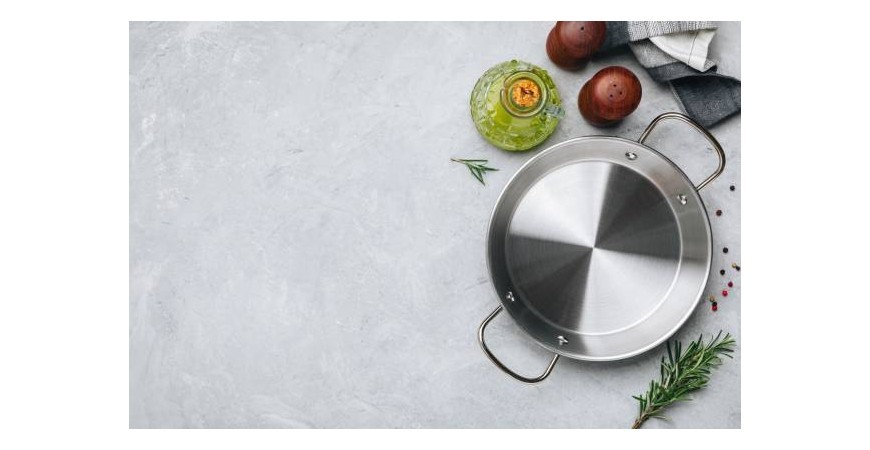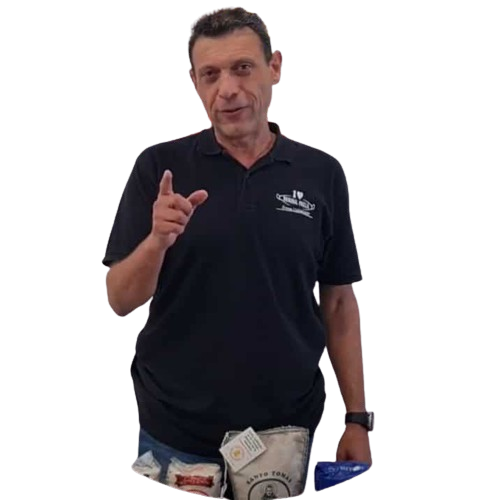What is the cheapest paella?
It’s common when we want to buy something to debate between the price and the quality of the product: is it worth buying a cheaper but lower-quality item, or is it better to go for the more expensive but better-made one?
This question applies to practically any product, so it’s no surprise that it comes to mind when we decide to search online for cheap paella pans.
A paella pan can last a lifetime if properly cared for. Of course, it’s reasonable to want this paella pan—passed down through generations—to be a high-quality paella pan at an affordable price.
In this blog post, we’ll investigate and reflect to understand and discover which are the cheapest paella pans and why they are priced the way they are.
What is considered a cheap paella pan?
Traditional paella pans are made entirely of polished steel. These pans are manufactured using a relatively simple process that involves unrolling a steel coil, pressing it into the traditional cone shape with a concave base to distribute heat evenly, then welding or riveting on the handles and polishing the surface. It’s a straightforward and now highly automated process.
Paella pans originated in the Valencian region, where the two main groups of manufacturers are located. Although there are manufacturers in Turkey and China, their products are rare in Spain and of very low quality.
At Original Paella, we distribute only the best paella pans made by Valencian manufacturers, guaranteeing the best quality-to-price ratio. While many commercial brands exist, nearly all of the units found in hypermarkets and large retailers come from one of these two manufacturers.
The main parameter for determining the quality of a paella pan is its weight, as it reflects the thickness of the steel and, therefore, its resistance to twisting and general use. It’s important to note that as the diameter of the pan increases, the thickness also increases, which makes sense since a larger pan needs greater strength.
In other words, a 70 cm pan is much thicker than a 50 cm one. However, the thickness doesn't change with every size. For example, 80 cm and 90 cm pans share the same thickness, but the 100 cm pan is much thicker than the 90 cm one. This also explains the pricing steps: 80 cm and 90 cm pans are similarly priced, while the 100 cm pan is significantly more expensive—but also more durable.
If we compare pans of the same diameter, the weight differences between top manufacturers are small, often under 5%, although the specific thickness used at different diameters may vary by manufacturer.
So, we could say there’s a "made in Spain" product with excellent value for money and minor differences between the two main manufacturers. The real price differences, however, come from the different types of paella pans. The traditional polished steel pan (the most economical option) has evolved to reduce maintenance, prevent rust, or add a heat-diffusing base—all aimed at improving the product’s function, durability, and heat distribution, but raising its price.
It’s true that paella pans from 20 years ago were heavier and used more steel, which made them costlier to produce. Nowadays, thanks to engineers and designers, pans are optimized to use less steel while maintaining excellent heat resistance, resulting in cheaper pans with very good quality. However, note that cooking with very intense heat during the sautéing stage can warp your pan—here's a link with tips to avoid this so your pan can be passed down to future generations.
To better explain the price differences, let’s briefly review the types of paella pans.
Comparison of paella pan types and prices
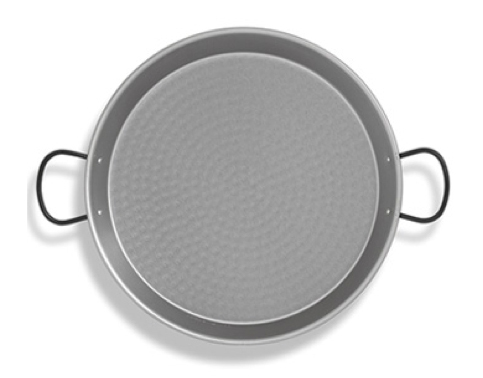
Polished Steel Paella Pan
The polished steel paella pan, also called the traditional or classic paella pan, is recognized by every rice master as the lifelong paella pan, used both at home and in restaurants.
Made 100% from polished steel, this pan distributes heat quickly and requires maintenance to prevent rust—by applying a layer of oil after cleaning. As it has no added treatments or coatings, it’s also the cheapest paella pan.
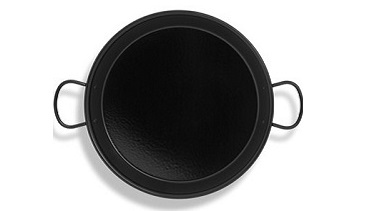
Enamelled Paella Pan
The enamelled paella pan, colloquially known as the black paella pan, is distinguished by its black enamel with white speckles. It is made similarly to the polished steel version, but coated with ceramic enamel and fired in an oven, which prevents rust and eliminates the need for post-use oiling. However, the enamel can chip with strong impacts, especially on the handles, which may render the pan unusable if chipped on the inner side.
Because it doesn’t require maintenance, it’s easier to store, making it around 25–30% more expensive than the polished steel version. This price difference is quickly offset by the convenience and rust resistance.
Currently, the enamelled paella pan is, in our opinion, the best value for money and the most popular, accounting for over 50% of current production.
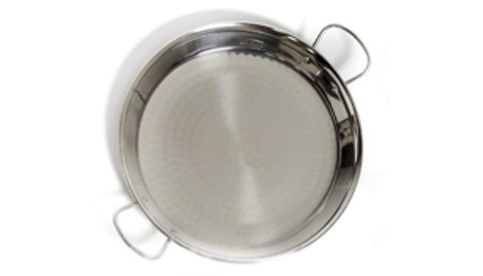
Stainless Steel Paella Pan
The stainless steel paella pan combines the look of the traditional paella with the rust-resistance of the enamelled paella. Made from stainless steel, it’s not affected by impacts or scratches, offering great durability and a shiny, traditional aesthetic without the need for maintenance.
It’s priced much higher than other options since it’s a gourmet product with low turnover and more expensive materials. Its main advantage—no maintenance—can also be achieved with a cheaper enamelled pan, so its purchase is often more aesthetic than functional.
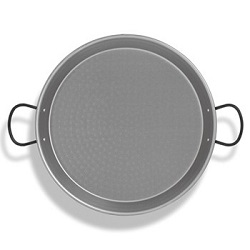
Extra-Thick Paella Pan
The extra-thick paella pan is similar to the polished steel version, sharing its pros and cons, but with a thicker base for increased heat resistance. It’s ideal for wood-fired cooking, high-heat settings, and heavy use—making it perfect for restaurants and hospitality in general.
Its higher price is justified by its superior resistance to heat and warping, making it efficient for professional or intense use.
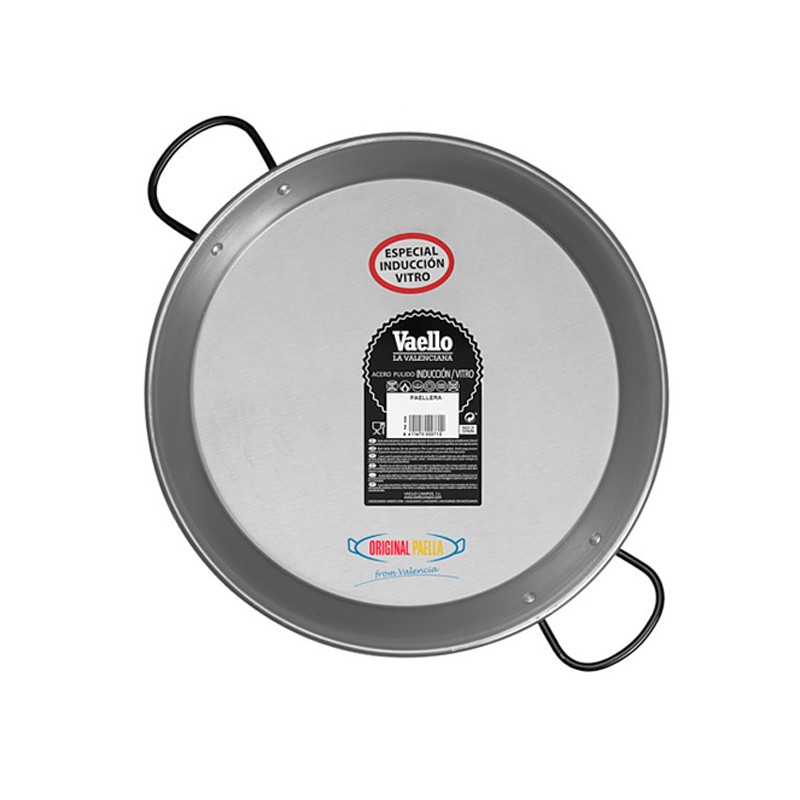
Induction Paella Pan
The induction paella pan, whether polished steel, enamelled, or stainless steel, is designed with a flat base instead of the traditional convex one. Its thicker bottom improves heat resistance and optimizes contact with induction or ceramic hobs.
Designed specifically for stovetops, its price is slightly higher than traditional models, but it allows us to cook delicious paellas without needing a burner.
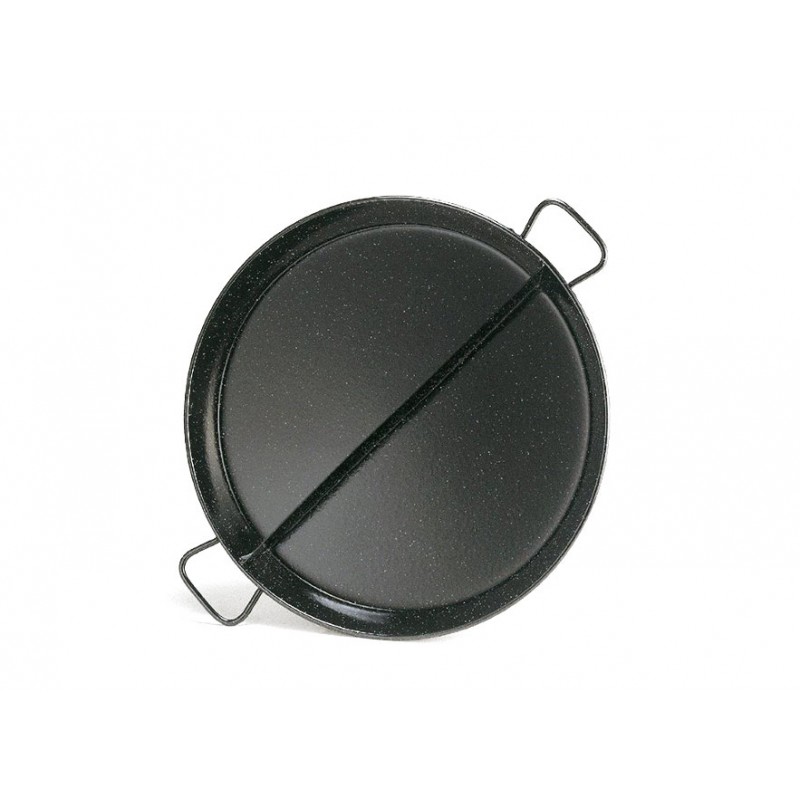
Multi-Taste Paella Pan
The multi-taste paella pans let us cook different types of paella in one pan, allowing for flavor combinations. Thanks to the ceramic enamel, they require no maintenance after use.
Their higher price is justified by their functionality and the ceramic enamel coating. Note that these pans are based on extra-thick models, with the divider added semi-manually.
Where to buy the cheapest paella pan?
To find the cheapest paella pan, we must first compare some of the most visited stores that sell them:
Best current prices and offers
As we’ve seen, the prices of different paella pans vary not due to inferior materials or poor manufacturing but because their different features cater to different needs, offering unique advantages.
We must also consider that prices may vary depending on whether the store sells directly from Valencian manufacturers.
As an example, let’s compare a 55 cm polished steel paella pan from Original Paella, Carrefour, and Amazon:
| 55 cm Polished Steel Paella Pan | |||
| Company | Original Paella | Carrefour | Amazon |
| Price | 18.95 | 23.50 | 24.69 |
As we can see, our paella pan is cheaper than both companies because we work directly as a distributor from the Valencian factories.
Final recommendations based on your budget
If you're looking for a cheap yet effective paella pan, we strongly recommend either the polished steel or enamelled steel pan—both very durable and reliable.
We hope this analysis helps you choose a cheap paella pan that’s also of good quality and suits your needs.
If you’d like to read more content from our blog, follow this link.

